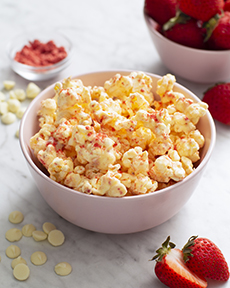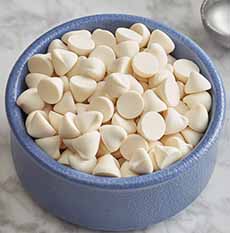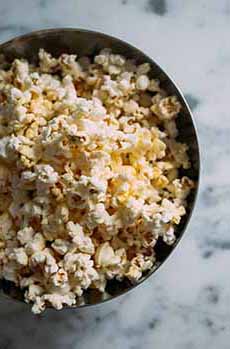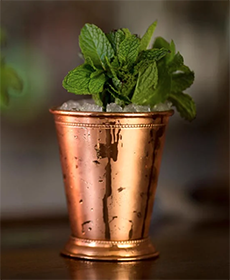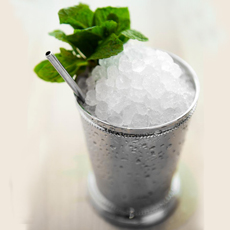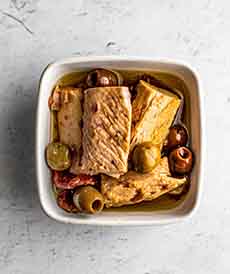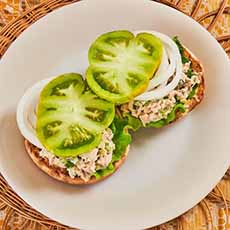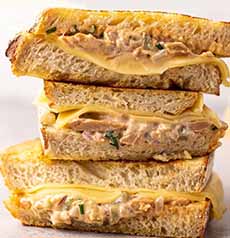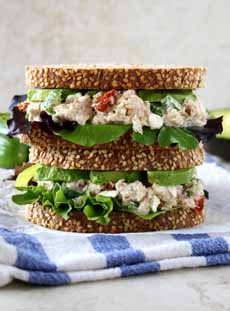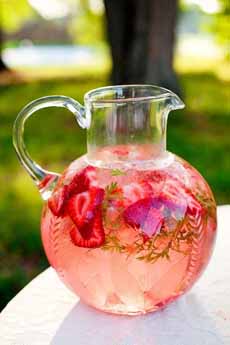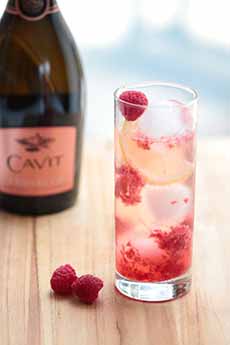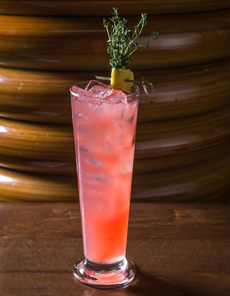|
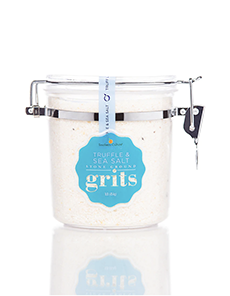
[1] Truffle grits (photo © Southern Culture Kitchen).
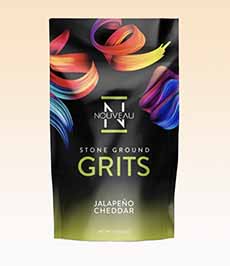
[2] Grits in colorful envelopes are available in Original, Garlic & Herb, and Jalapeño & Cheddar (photo © Shopify).
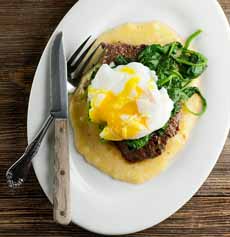
[3] Steak and eggs with grits. Here’s the recipe (photo © Framed Cooks).
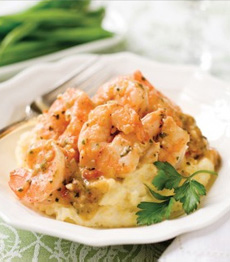
[4] A classic dish of shrimp and grits (photo © Mackenzie Ltd.)

[5] Beyond just Shrimp & Grits, here’s a recipe for Seafood & Grits (photo © Nouveau Bar & Grill | Atlanta).

[6] White corn grits (photos #5 and #6 © Anson Mills).
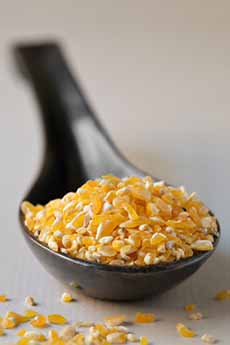
[7] Yellow corn grits.
|
|
These stone-ground truffle grits (photo #1) are a tasty gift packaged in a reusable canister. Created by Chef Ebony Austin, owner of Atlanta’s Nouveau Bar & Grill, the premium white corn grits, from corn grown in the Georgia mountains, are blended in small batches with truffle powder and sea salt.
They’re ready to make a delicious side for breakfast, lunch, or dinner.
Bonus: Grits are gluten-free.
Chef Austin has also packaged gifts in dramatic envelopes (photo # 2): in Original, Garlic & Herb, and Jalapeño & Cheddar, via Shopify.
Whether canister or envelope, the grits are packaged beautifully for gifting or home use.
> For the canister-packaged truffle grits, head to SocuKitchen.com.
> For the three flavors in envelope packaging, head to Shopify.
> Check out the grits recipes below.
HOW TO SERVE GRITS
Breakfast: As porridge served sweet with berries, butter, cinnamon, jam, milk/cream, raisins, sugar/brown sugar/syrup; or savory with cheese, chiles, even peanut butter; as a side with eggs and bacon or sausage and red-eye gravy.
Lunch and Dinner: Southern-style with blackened fish, tasso ham, shrimp; (photo #4) or freestyle with other proteins including braised beef, fried chicken or fish, lamb ragu, pork chops, scallops, steak (photo #3, whatever appeals to you, including a grits cheese soufflé.
Casserole: Combine cooked grits with diced bell peppers, onions, mushrooms, other vegetables, sausage or other meat (including crumbled leftover burgers) and seasonings, and bake at 350°F for 35 minutes.
Ideas For Sides: Top cooked grits with bacon, beans, caramelized onions, grated cheese, herbs; roasted red peppers, sautéed garlic, mushrooms or a combination of bell pepper, mushrooms and onions); scallions/chives, tomatoes (chopped fresh, sundried); ratatouille; truffle truffle butter and/or powder.
South-Of-The-Border: Add minced jalapeños or chipotles, or a combination of cayenne pepper, chili powder, cumin and paprika; serve with salsa.
A GRITS VOCABULARY
Grits can be ground into fine, medium, or coarse textures, which impact the cooking time.
Stone-ground grits are coarsely ground and cooked on the stovetop, which can take 30 minutes or longer.
Quick grits, medium ground, cook for 5-7 minutes on the stovetop, 3-4 minutes in the microwave.
Instant grits, finely ground, cook for 1-2 minutes in the microwave.
GRIST: Everything that comes out of a stone mill when milling grain. The particular mill where grains are ground is called a grist mill. The word grist comes from Old English, meaning “grinding,” which itself derives from Proto-Germanic and Proto-Indo-European words for to rub or to grind [source].
GRITS: A porridge made from cornmeal boiled with milk or water. Grits are traditionally served as a breakfast dish, as part of a dinner entrée (shrimp and grits is a popular pairing), as pudding, and as a side dish, where it also can be shaped into squares and fried.
Grits can be prepared either savory or sweet, with savory seasonings being more common. Corn is a New World grain, and the dish originated in the Southern U.S.*; it is now found nationwide. Grits are similar to other thick, maize-based porridges from around the world, such as polenta (Italy) and mieliepap (South Africa).
Traditionally, grits were made with dried hominy (see next definition), which is corn that has been treated with an alkali solution. However, you can also find grits that are simply coarsely ground or stone-ground cornmeal.
Grits are made from both yellow and white corn. Historically, white corn was popular in the port cultures of the South (Charleston, New Orleans, Savannah, Wilmington) that were settled by Europeans who had a preference for white milled flour. Moving inland through the rural American South, yellow corn and grits predominated.
White corn has more pronounced mineral and floral nuances; yellow corn is more robust with citrus flavor at the back of the palate.
> The difference between grits and polenta.
HOMINY GRITS: Hominy grits are a type of coarsely-ground grits made from hominy, which is corn that has been treated with an alkali in a process called nixtamalization.
Hominy grits are made by soaking dried corn kernels in the alkali solution to remove the outer hulls. The soaked corn kernels are then dried and ground into grits. They are typically ground several times into uniform small pieces, about 1/16th to 1/20th of an inch across.
Hominy grits generally have a finer texture than stone-ground grits. The preferred texture is a matter of individual choice.
In the Charleston, South Carolina, area, cooked hominy grits are called “hominy” and uncooked grits are called “grist.”
The word “grits” is derived from the Old English word grytt, meaning coarse meal [source].
HOMINY Hominy is nixtamalized corn, a food made by soaking dried whole corn in an alkali solution to remove the germ and hull. White or yellow corn kernels are added to scalding water mixed with the chemical (alkali) solution, such as mild lye or slaked lime. The soaking forces the kernel to expand so the hull and germ split, and the kernels can be easily removed.
The kernels can then be boiled whole, creating a soft puffy food, or ground into grits.
Hominy has other uses, too. For example, in Mexican cuisine, it is finely ground to make masa harina (corn flour), which is then turned into tacos, tamales, tostadas, etc.
Hominy is the Colonial English spelling of the sound of the oral Native American word for corn. “Hominy” is a shortened version of the old Carolina term for whole corn, “hominy grist.”
GRITS RECIPES
Cajun Seafood & Grits
Cheese Grits
Pumpkin Grits
Steak & Grits
________________
*Native Americans and Mesoamericans made the first porridges from cornmeal.
|
